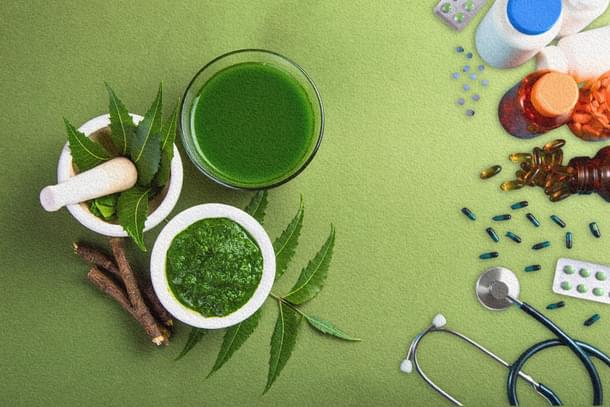Science
Beyond The Evangelical Stethoscope: Why Ayurveda And Siddha Deserve Rigorous Study, Not Ridicule
K Balakumar
Jul 09, 2025, 12:24 PM | Updated 12:24 PM IST
Save & read from anywhere!
Bookmark stories for easy access on any device or the Swarajya app.


In the age of Twitter (X) threads and hastily typed medical hot takes, few handles are as unrelenting as the one who goes by the handle @TheLiverDoctor. Armed with a stethoscope and scorn, the account regularly dismisses alternative medical systems as 'unscientific quackery', often with a practised flourish of derision.
He sweepingly condemns all practitioners of Ayurveda and Siddha, India’s age-old medical systems, as frauds selling snake oil. This, coming from someone supposedly representing modern scientific medicine, is more than lazy generalisation.
If anything, his brand of evangelism is dangerous.
It discourages exploration, collaboration, and most worryingly, it alienates millions who seek out traditional medicine not by choice but necessity. Most patients try out alternative medicine, either due to the inefficacy of allopathy or it being too costly for them.
Either way, they need empathy, not mocking. And, if we are so particular, let us call out the real quackery: the blind allegiance to a single medical doctrine while discarding centuries of empirical knowledge.
The point is, if wisdom had a shelf life, modern medicine might never have evolved beyond leeches and bloodletting.
There is place for neem, ashwagandha, turmeric in modern medicine
In 2015, the Nobel Prize in Physiology or Medicine was awarded to Chinese scientist Tu Youyou for her work in deriving artemisinin, a powerful anti-malarial drug, from qinghao, a plant used in Traditional Chinese Medicine (TCM) for centuries.
Western laboratories had tried and failed to develop effective treatments for drug-resistant malaria. Tu looked backward, not in superstition, but in scientific humility, to centuries-old Chinese texts that described remedies using the sweet wormwood plant. By extracting artemisinin, she saved millions of lives and validated the immense potential in ancient healing knowledge.
If China’s qinghao could become artemisinin, why should India’s ashwagandha, turmeric, neem, or adathodai not be explored with the same scientific rigour? Why should we not take seriously the triphala that is prescribed for gut disorders, or the kabasura kudineer touted during the COVID-19 pandemic?
These are not divine panaceas, but neither are they inherently dubious. The binaries imposed by people like @TheLiverDoctor, either allopathic or quackery, lack the very nuance that science prides itself on.
If we are talking about medicine and evidence, how about going back a couple of millennia to the man considered the father of surgery, Sushruta, author of the Sushruta Samhita, written in Sanskrit?
Long before antiseptics, anaesthesia, and antibiotics entered the lexicon of Western medicine, Sushruta was performing detailed surgical procedures including rhinoplasty (nasal reconstruction), cataract surgery, and C-sections. His treatise not only described over 300 surgical procedures and more than 120 surgical instruments but also emphasised post-operative care and the ethics of medicine.
And yet, today, if a practitioner even refers to Sushruta in a medical conversation, he or she is likely to be mocked or dismissed. This is not science. This is old-fashioned gatekeeping.
Modern science, ancient knowledge
Ayurveda and Siddha are not above scrutiny. Nor should they be. But they are also not beyond utility. Several modern research initiatives, especially in the area of phytochemistry, have begun to scientifically validate the claims made in ancient Indian texts.
Take curcumin, the active compound in turmeric. Once dismissed as kitchen folklore, it is now the subject of thousands of peer-reviewed studies for its anti-inflammatory, anti-cancer, and neuroprotective properties. Similarly, Withania somnifera (ashwagandha) has shown potential in reducing cortisol levels and aiding with stress-related disorders, something modern medicine often resorts to psychotropics for.
Allopathy, the dominant mode of treatment globally, rightly demands evidence-based validation. But must validation come only from randomised controlled trials in corporate-funded journals? Ayurvedic diagnosis, which incorporates pulse-reading (nadi pariksha), constitutional analysis (prakriti), and environmental factors, could profoundly supplement patient assessment, especially in chronic or lifestyle diseases.
Similarly, Siddha medicine delves into the spiritual and biochemical dimensions of health. The use of heavy metals and minerals, when purified using centuries-old protocols, is controversial, yes, but dismissing it without study ensures ignorance, not safety. The patient should be at the centre of medicine, and not ideology.
India’s untapped potential
Unlike China, which invested billions in researching and globalising TCM, India has been tentative and occasionally self-loathing in how it presents Ayurveda and Siddha to the world.
Part of this is due to the reluctance of its scientific elite, most of them Western-trained, to acknowledge anything outside their academic canon. Another part is the risk of charlatans misusing the label of Ayurveda to peddle untested concoctions. But that is not a reason to throw the baby out with the bathwater. Regulation is the need of the hour, not rejection.
India houses one of the richest ethnobotanical ecosystems on Earth. The Traditional Knowledge Digital Library (TKDL), a government initiative, has already documented over 300,000 formulations from ancient Indian texts. But without open-minded researchers and interdisciplinary collaboration, they will remain just that — texts.
The Indian government’s creation of the Ministry of AYUSH, the umbrella body that governs Ayurveda, Yoga & Naturopathy, Unani, Siddha, and Homeopathy, is also a step in the right direction. Unlike earlier token gestures, AYUSH has sought to institutionalise and legitimise these ancient systems through education, standardisation, and research.
Major hospitals now house AYUSH wings; clinical trials are increasingly funded; cross-disciplinary dialogues with allopathic experts are beginning, however tentatively. It is not a perfect ecosystem, but it is a welcome acknowledgment that these systems have much to contribute when curated with rigour.
Imagine a world where a cancer patient’s care includes both chemotherapy and Ayurvedic rasayanas to improve immunity. Or where gut disorders are treated not just with PPIs but also with herbal adaptogens. Or where anxiety is managed through SSRIs and yogic breathing. This is not fantasy, it is the future of compassionate, integrative medicine.
Imagine a healthcare system where the diagnostic precision of modern technology is combined with the individualised, holistic understanding of the patient derived from Ayurvedic or Siddha principles. Where pharmaceutical interventions are complemented by time-tested herbal remedies, and where lifestyle and dietary advice, central to ancient systems, are integrated into preventive care.
This is not about replacing one system with another, but about enriching both. The time for intellectual arrogance is over; the era of integrated wisdom must begin.
The real point is: what @TheLiverDoctor and many like him forget is that patients do not care about medical turf wars. They want relief. They want healing. They want options. When someone dealing with chronic back pain finds no help in paracetamol but gets relief through an Ayurvedic massage or herbal paste, that is not superstition. It is lived experience.
By branding entire systems of knowledge as being dangerous, people like him are not protecting patients. They are limiting their options. Worse, they are driving genuine seekers of alternative therapy into the hands of bigger exploiters, as the medical mainstream industry crawls with charlatans and greedy operators who prey on people's misery. Or at least, this is the general perception.
Science without arrogance
True science is humble. It knows it does not know everything. The best doctors are not the loudest tweeters or the most dismissive voices. They are those who listen, learn, and evolve.
When the West finally turned to traditional Chinese medicine, it found artemisinin and a Nobel Prize. What might it find if it turned, in good faith, to Ayurveda or Siddha? To be clear, one does not need to romanticise everything ancient. In fact, one should not. But neither should one ridicule it without trial. India’s ancient medicinal systems do not need blind faith. They deserve bold science and open minds.
In 1543, Andreas Vesalius, it is said, revolutionised anatomy by cutting open corpses despite religious bans. He was vilified for a while, but later vindicated. Modern medicine must remember its own heretical history before it becomes the Inquisition. The next artemisinin might just be sitting in a palm-leaf manuscript in Madurai. But to find it, we need fewer Twitter dogmatists and more scientific explorers.
Let the scalpel of reason cut both ways.





